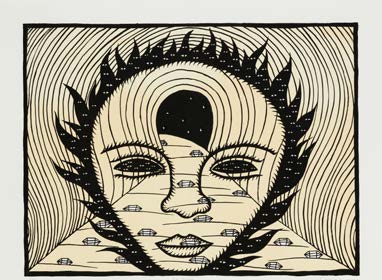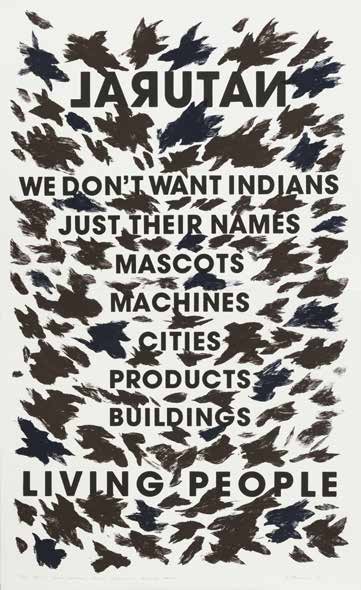Making Multicultural Education and Art Education an Important Part of Curriculum
by Bernard Young, PhD, Arizona State University
The year 2020 was like no other year in the history of the United States, in fact, this has been an extraordinary and tragic year across the entire globe. The horrific murder of George Floyd and other African Americas along with continued violence against Black, Asian, Indigenous, and other people of color (BIPOC) forces any reasonable person to reexamine multiculturalism and the curriculum in our schools. Culturally diverse populations in U.S. schools and society are rapidly growing and taking on new dimensions of complexity and practicality as demographics, social conditions, and political circumstances change. Pre-Service teachers need to acknowledge the 2020 social unrest, COVID-19, and numerous other issues that are having major impacts on our society, making multicultural education and art education an important part of our curriculum. This past semester, I gave the assignment to my art education students to visit the Artura.org site and examine the culturally diverse artists and explain how they would use the materials in class.
I asked students to “Visit Artura.org and register. Go to the Teaching Resources and select one artist and write a page about their work and philosophy. Turn this in and share this in class on the day you come and also post it on Canvas (educational software).” Here are a few examples of student responses that prompted meaningful class discussion:

Figure 1: Betye Saar, Mystic Sky with Self-Portrait, offset lithograph, collage, construction, 21.5" x 25.25" 1992
Betye Saar
“The work Mystic Sky with Self-Portrait (figure 1) by Betye Saar caught my eye, so I decided to pick her as the artist I would choose to dive deeper into her work. For this particular piece, what caught my attention was everything about it, it is a whimsical, colorful collage, full of symbolic and spiritual imagery as well as being a self-portrait. So, I then decided to look up more of her artwork, I was a little shocked to see that she does a lot of three-dimensional work. After looking at more of her art, I saw that for a lot of her art, she creates three-dimensional collages or assemblages, where she combines everyday or discarded objects—paper and fabrics—to create her pieces. Though she does seem to also create two-dimensional collages as well. While looking through her work, what stands out to me is that her art seems to have a strong and personal voice behind it. This can be felt throughout her work as a whole, as I feel she tackles similar topics throughout most of her art. While looking into her and the art she creates, I get the impression that she creates her art as a personal expression and as a way to explore ideas close to her, for example, in a lot of her work, I see themes of femininity or spirituality, like in her piece House of Tarot, in which she incorporates cards as a major element of the piece. She also uses frequent imagery of the moon, the stars, the sun, the eye, hands featuring palmistry symbols, and to me personally, a lot of her three-dimensional assemblages seem to resemble altars. Saar also tackles heavy topics in her work such as politics, societal norms, and issues of power, especially relating to both women and people of color. I noticed her use, and in a way, her reclamation of old, racist depictions of African Americans that she includes and incorporates into her work. For these pieces, they feel like sad time capsules of the past coming back to show us the ugly side of history.
“After doing this assignment, I am really happy that I discovered Betye Saar, as I don’t think I knew of her or at least did not really know much of her work before this. But now I’m glad I did, as I have fallen in love with her work.” —Abigail S.
Isaiah Zagar
“The artist I decided to focus on is named Isaiah Zagar from Philadelphia, PA. He is most known for his mosaics on buildings [throughout South Philadelphia]. The artwork presented on the Artura website is Isaiah (1986, figure 2). This is an abstract self-portrait. Similar to his mosaics, he made his self-portrait using vivid colors and interesting patterns. This self-portrait incorporates a striped background using blue and green. Within the background, there are also smaller drawings of plants and flowers in red ink. His hair is yellow and, in order to give the illusion of hair, the artist uses more markmaking such as plants and scribbles in red ink. With blue ink, he makes small mark-makings of leaves, a shoe, and fur. His face is left white with the exception of the overlapping mark-makings in every color and a square over his right eye. The overlapping figures on his face are small plants, scribbles, feet, and stamps. The square over his eye incorporates a man laying down. This man has three arms and each arm is holding a large red flower. On his other eye, there are also three flowers, one of which makes up his left eye. The flowers all have faces but the man that is laying down does not have a face. The man has green around him, I am not sure what exactly it is supposed to be but it looks interesting. Isaiah looks happy in this portrait for he is smiling and the colors are very lively. Also, the fact that he uses a lot of plant and flower imagery shows that this is more of a happy and uplifting lithograph. This portrait is also very messy and all over the place but it doesn’t give off a chaotic or violent vibe. I think this is because of the use of color and the composition. The composition is very balanced because the background has horizontal stripes with cool colors. The subject, which is the face, has warm colors and it is placed right in the middle…This would be a good reference for a self-portrait lesson plan because it is more abstract and I feel like students would be more interested and have more fun with this approach.” —Jasmin R.

Figure 2: Isaiah Zagar, Isaiah, offset lithograph, 30" x 22" 1986
Ibrahim Miranda
“The artist that I chose from the teaching resources section of Artura.org was Ibrahim Miranda. Ibrahim was born in Cuba and his culture and history inspire so much of his work. He is a painter and printmaker and also draws inspiration from natural elements like water. His works show introspection or depictions of dreams—to ask what is real and what is not real. The featured work [I chose] is a screen-print using light tan and black ink titled El Tunel (figure 3). The image shows an oval-shaped head with many eyes in the hair and eyes and a tunnel flowing through the head carrying crystals into the dark sky inside or behind it. Ibrahim is quoted saying, ‘The work El Tunel is a kind of self-portrait, it is an idea about the introspection and isolation of the human being.’ The tunnel traveling through the head could be taking us into the mind space of the figure, Ibrahim himself, so that we can see his inner thoughts, imagination, dreams, or perspective. The inclusion of so many eyes makes it feel like outsiders are looking in at something personal that should be or wants to be hidden from them. The gems seem to me to be ideas, Inspiration, or thoughts being brought in from outside influences and making their way into the mind-space. The border on the print makes the image feel more real, especially since the chin of the figure is outside of the frame.

Figure 3: Ibrahim Miranda, El Tunel, offset lithograph, 23" x 28" 1999
“As a whole, the image has depth and character on a deeper psychological level. I feel that this work helps to prove why multicultural works are so important to share in an educational setting. The perspective of the artist is unique and emotional and can help students connect to themselves in a way.” —Katie H.

Artura.org 15 Figure 4: Edgar Heap of Birds, Telling Many Magpies, Telling Black Wolf, Telling Hachivi, silkscreen, 70" x 45" 1989
Edgar Heap of Birds
(Hock E Aye Vi) “The screen-print Telling Many Magpies, Telling Black Wolf, Telling Hachivi (figure 4) is a deeply powerful piece by the artist Edgar Heap of Birds reflecting on the appropriation of Native American culture. The print is six feet tall, covered in a swarm of black shapes, and its bold words calling out how there are many names, goods, and symbols stolen from Native American culture despite the longtime efforts to erase their languages, histories, and their existence as a whole. It is no secret that colonizers from Europe took Native American lands, sickened them with disease, and eventually, as time went on, white America continued to try and destroy Native culture by sending their children off to assimilate in torturous boarding schools that stole their identities. There were extensive efforts to strip the Native American people of their ways, but despite all that they persevered…only to be used as mascots and have their culture further stolen and trivialized as if they were not, as Heap of Birds puts in his piece ‘Living People.’ I believe what this piece is really trying to drive home is how the culture has been turned in some instances into a caricature to the same tune as a pirate or a knight mascot. The clear difference between pirates and knights of course being, one: they are a ‘profession’ and not limited to a specific race, and two: they are no longer active, living cultures. Many Native American traditions, languages, and other significant characteristics from different tribes have been lost forever but others are still trying to recover from several decades worth of damage dealt to them. On the Resource page, Heap of Birds is quoted saying, ‘Before any truly sweeping social justice for Natives in America can be forthcoming, a stunning reality must be protected of the true existence of Native Americans.’ By this, I believe that the artist means Native Americans must be recognized as a current, living culture with peoples who are still wholly dedicated to their tribes and their ways” —Morgann H.
As a professor of art education, I note interest among many students in explicit notations of the use of words in art for communication and visual effect. Therefore, next to Edgar Heap of Birds print, I am highlighting A. J. Smith’s word print Calm (figure 5). This print along with several others in the Artura.org database by artists such as Ayanah Moor, Juan Sanchez, Rodney Ewing, Ricardo Gouveia, and Clarissa Sligh all use text as an integral part of their imagery.
Conclusion
Multicultural education is integral to improving the academic success of all students. Exploring Artura.org as a resource database is a tool that can improve learning and creativity through a wider knowledge of contemporary diverse art/ artists. Access to Artura should be an essential tool as researchers and educators strive to help students learn and prepare them for a pluralistic society
